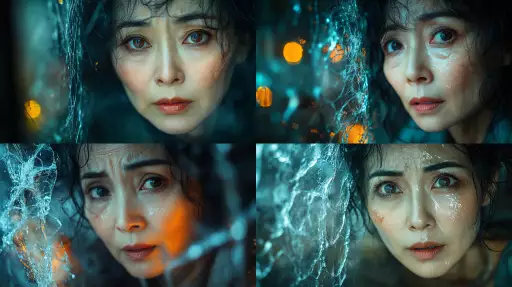Explore the Best AI Image Gallery

Pixels on Your Skin: How AI Images Are Transforming Design
The creative landscape is undergoing a seismic shift, driven by the rapid advancements in artificial intelligence (AI). One of the most captivating developments in this realm is the emergence of AI image generation, capable of producing stunning visuals with remarkable ease. This technology is poised to revolutionize the design industry, offering both exciting opportunities and complex challenges.
A New Era of Design Possibilities
AI image generators leverage powerful algorithms trained on vast datasets of images, enabling them to learn patterns, styles, and compositions. Designers can now harness this technology to:
- Generate concept art: Quickly iterate through different design ideas and explore various visual concepts.
- Create personalized visuals: Tailor designs to individual preferences, demographics, or specific use cases.
- Produce marketing materials: Generate eye-catching graphics for social media, websites, and advertising campaigns.
- Develop unique textures and patterns: Explore novel visual elements that push the boundaries of traditional design.
Bridging the Gap Between Human Creativity and AI Power
While AI image generators are undeniably powerful, they are not meant to replace human designers. Instead, they serve as collaborative tools, augmenting human creativity and streamlining the design process. Designers can leverage AI to:
- Focus on higher-level creative tasks: Spend more time conceptualizing, strategizing, and refining design ideas.
- Overcome creative roadblocks: Generate fresh inspiration and explore unconventional solutions.
- Streamline repetitive tasks: Automate time-consuming processes, such as creating basic layouts or generating variations of a design.
Ethical Considerations in the Age of AI Design
As with any transformative technology, the rise of AI image generation raises important ethical considerations:
- Copyright and ownership: Questions surrounding the ownership and copyright of AI-generated images remain complex and require careful consideration.
- Bias and representation: AI algorithms are trained on existing datasets, which may perpetuate societal biases. It is crucial to ensure that AI-generated imagery reflects diversity and inclusivity.
- Transparency and accountability: The decision-making processes of AI models should be transparent, allowing for scrutiny and understanding of how images are generated.
The Future of Design: A Collaborative Landscape
The future of design lies in a harmonious collaboration between human creativity and AI capabilities. As AI technology continues to evolve, we can expect:
- More sophisticated AI models: Capable of generating even more realistic, nuanced, and personalized images.
- Increased accessibility to AI tools: Empowering a wider range of individuals to explore and harness the power of AI in design.
- Evolving design workflows: Integrating AI seamlessly into existing design processes, fostering greater efficiency and creativity.
The emergence of AI image generation is undeniably transforming the design industry. By embracing this technology responsibly and ethically, we can unlock a future where human creativity and AI capabilities converge to create innovative and impactful designs that shape our world.


](https://images.ai-img.art/thumbnails/150/008b5d5d49667cc2e93a5f8a8adfaa545963da99c39ff0901f5296294636400d.webp)

](https://images.ai-img.art/thumbnails/150/4289d1230b86a96c4d556636c3167bed0ef38f850826549517e4e45db4d87bf7.webp)













](https://images.ai-img.art/thumbnails/150/f9584153b4cddd8c9fab611dc10247549b275c59bc173251e37d0935874f9deb.webp)










](https://images.ai-img.art/thumbnails/150/f67d9af3398150f2ab1bcf250717fea134275e2ca896252b54a4d9bb3719f9ac.webp)
](https://images.ai-img.art/thumbnails/150/c2c9c48b38fae37f0a457b80b084ed01ba803810fc8f488c8f610c03abc74049.webp)




](https://images.ai-img.art/thumbnails/150/bddf3ae4a232290858389b933c866ad3be429ef2e25c23a9f4d7713ed6e44d0b.webp)





